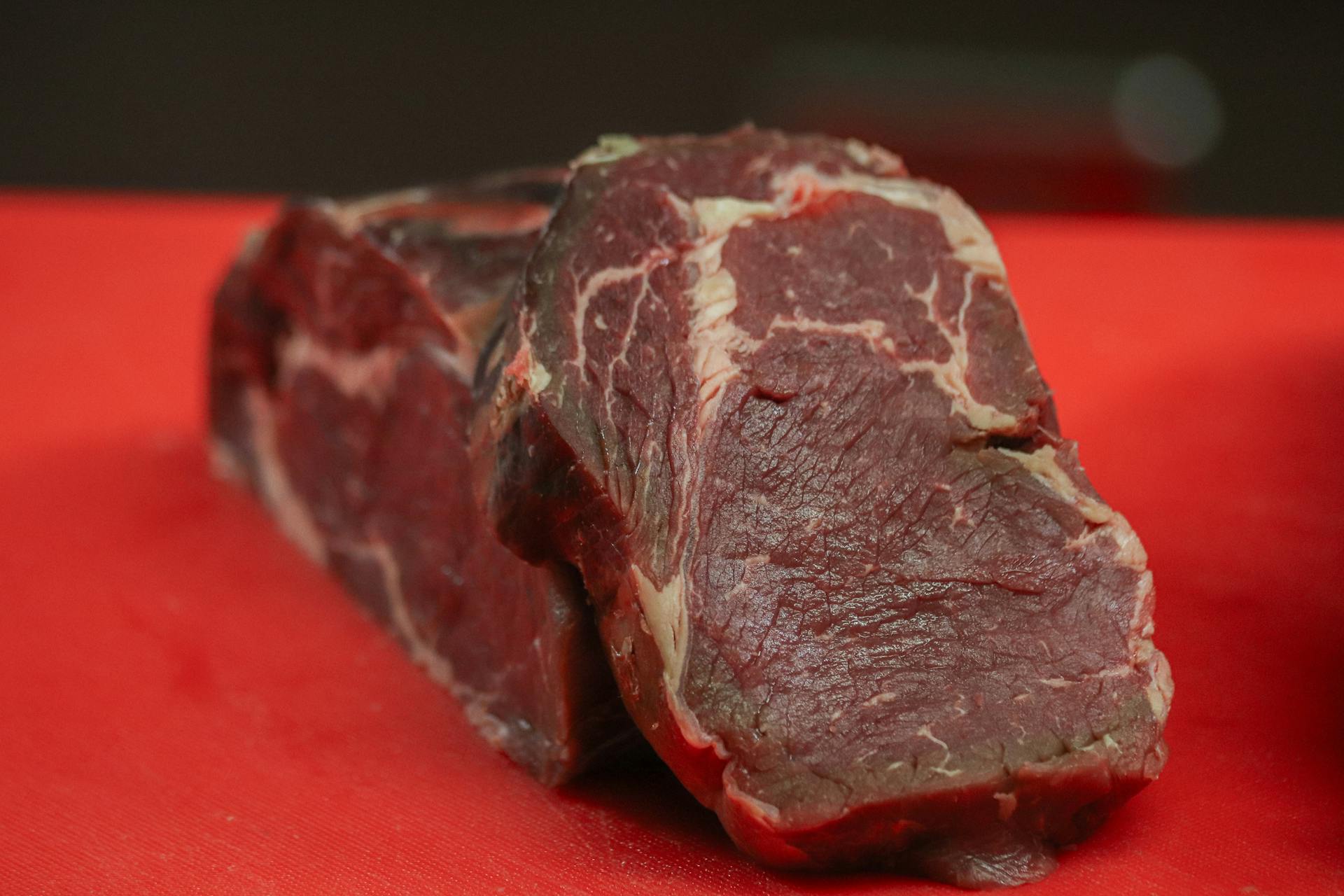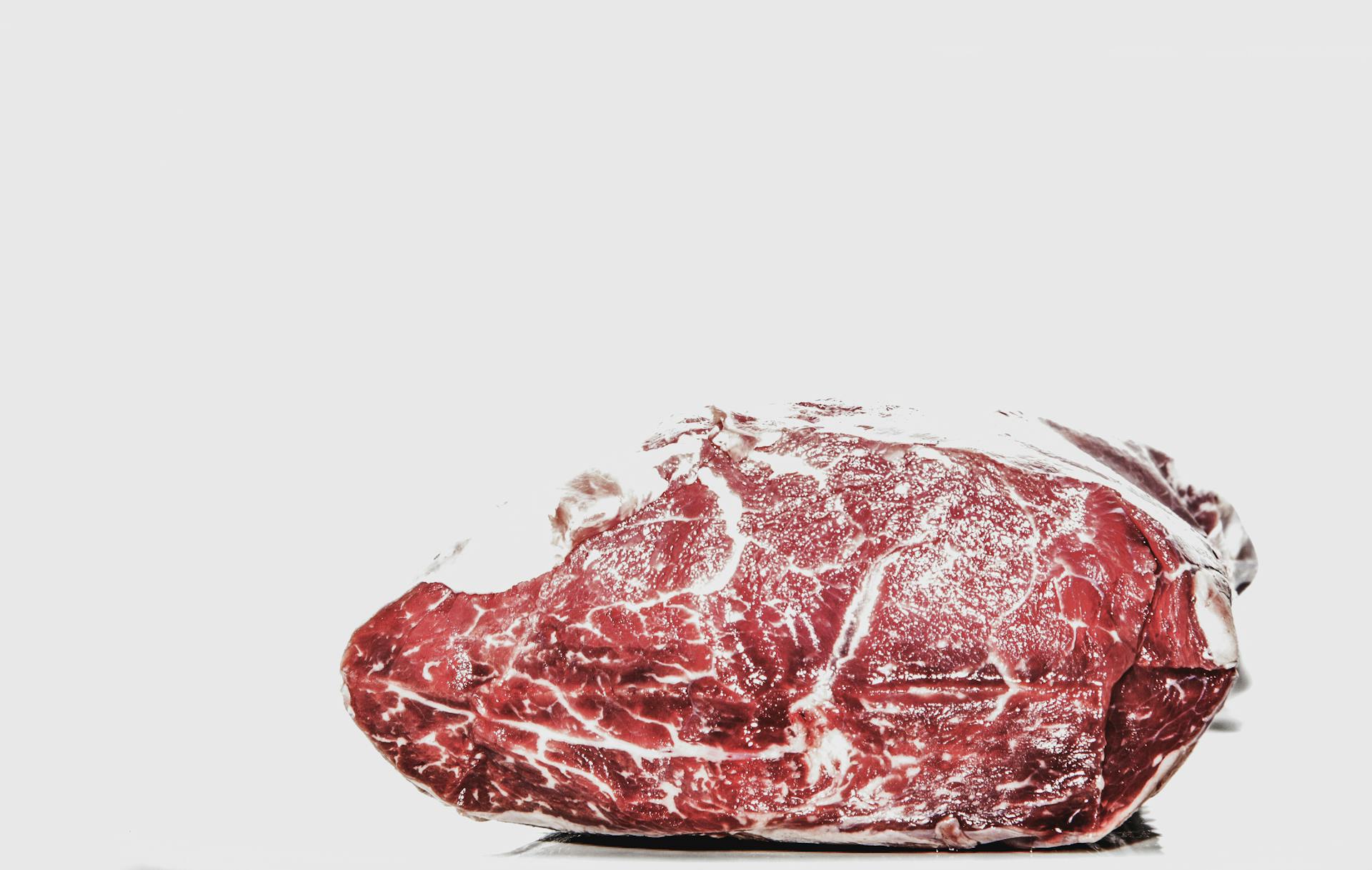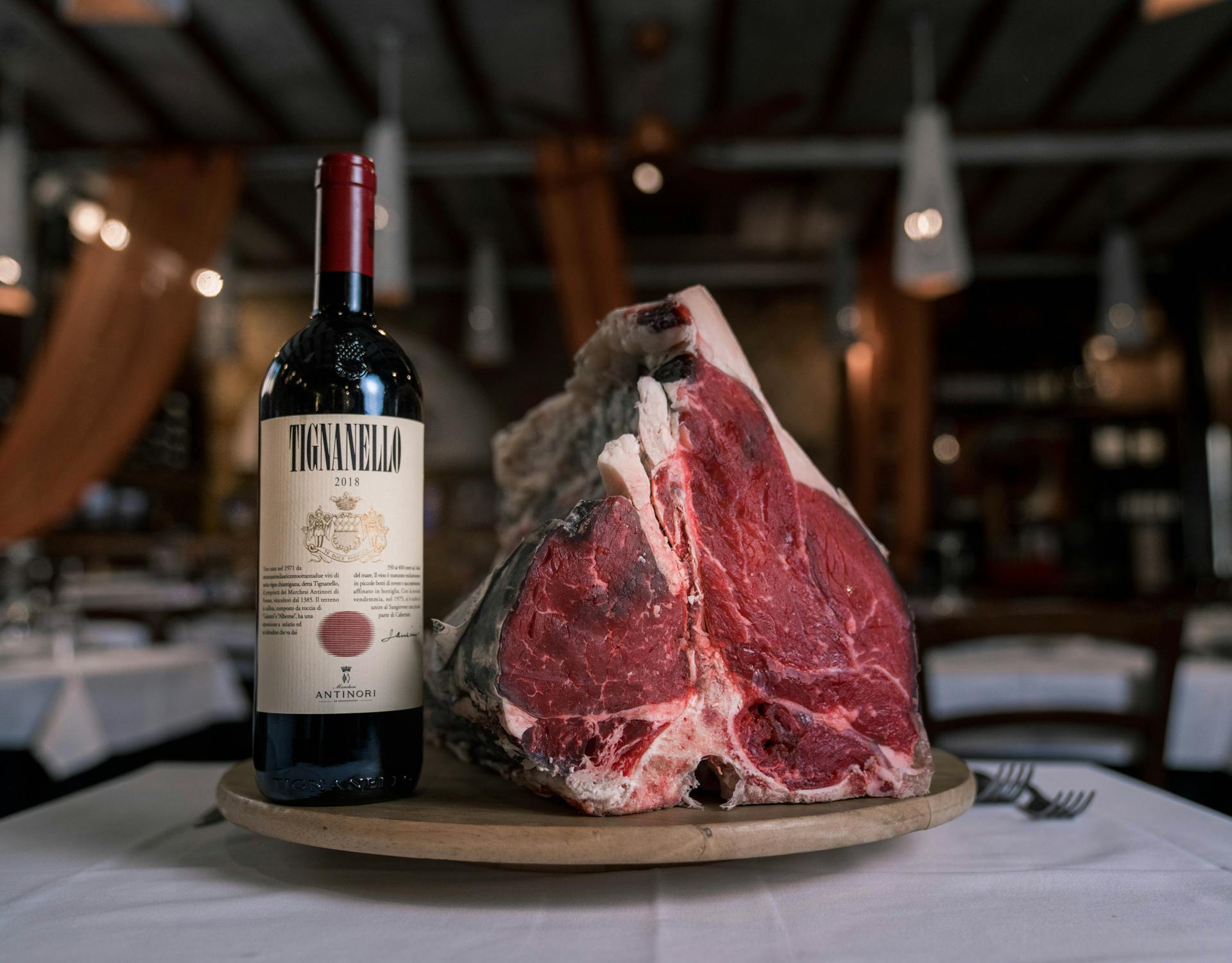
Red meat can be a nutritious addition to a dog's diet, but it's essential to understand the benefits and potential drawbacks. Dogs are omnivores, and a small amount of red meat can provide essential protein, iron, and other vital nutrients.
Some red meats are higher in fat and calories than others, making them less suitable for dogs with weight or digestive issues. For example, pork and beef can be high in fat, whereas lamb and venison are leaner options.
A balanced diet that includes red meat can support a dog's overall health and well-being, but it's crucial to choose the right type and amount.
Benefits of Red Meat for Dogs
Red meat, specifically beef, is a nutritious and delicious addition to your dog's meals. It's packed full of protein, which is essential for your dog's overall health.
Dogs need protein to create hormones, enzymes, and new DNA, as well as grow fur, muscle, and skin tissue. Beef is an excellent source of protein, making it an ideal ingredient in your dog's diet.
Curious to learn more? Check out: Just Food for Dogs Beef
Beef also contains a range of minerals, including iron, zinc, phosphorus, and selenium. These minerals play a vital role in maintaining your dog's health, with iron preventing anaemia and phosphorus helping to keep their teeth and bones strong.
Your dog's body uses proteins for almost everything it does, making beef a brilliant choice for their diet. In fact, dogs can safely eat beef every day as a major part of their diet, as long as it's balanced with other essential nutrients.
Beef is an excellent source of B vitamins, including B12, B3, and B6. These vitamins help your dog's body create and use enzymes properly, preventing anaemia and supporting the creation of red blood cells.
Raw or cooked beef can be a healthy treat for your dog, as long as it's served plain without any seasonings or spices. Many pet owners use boiled beef mince and rice as a bland meal for their pup when they're feeling sick.
It's worth noting that most pet food companies use beef in their products because dogs rarely have a medical reason for removing beef from their diet, such as a food allergy.
Readers also liked: Just Food for Dogs Beef Recipe
Raw Meat for Dogs
Dogs have forgiving digestive systems that can handle raw meat with no problem, thanks to their higher acidity in the stomach and shorter intestinal tracts.
They can eat raw meat that may harbor salmonella or listeria spores, but it's essential to choose high-quality sources to minimize the risk of contamination.
If your dog is immunocompromised, it's best to avoid raw meats altogether, as their weakened immune system makes them more vulnerable to pathogens.
A good alternative is to lightly cook the beef or opt for freeze-dried options, which retain almost 100% of the nutrients found in raw meat.
Core Benefits of Raw Meat
Dogs share 99.9% of the same DNA as the grey wolf, which means their nutritional requirements haven't changed much since domestication.
Raw beef is a good choice for dogs because it's a natural part of their diet, just like it was for their wild ancestors.
How to Offer Raw to My Dog

Raw beef is a great option for your dog, and you can offer it in various ways. Cut the beef into bite-size pieces or small morsels to make it easy for your dog to eat.
Dogs have forgiving digestive systems, which means they can handle raw meat that may harbor salmonella or listeria spores. However, it's essential to choose high-quality sources to minimize the risk of contamination.
You can add raw beef to your dog's bowl as is, or cut it up and mix it with their regular food. Some dogs even prefer lightly cooked meat, but keep in mind that cooking decreases the nutritional benefits.
Freeze-dried beef is also a great option if you're not comfortable with raw meat. It retains almost 100% of its nutrients and can be a convenient alternative.
If your dog has a weakened immune system, it's best to cook the beef lightly or opt for freeze-dried to minimize the risk of infection.
Related reading: How Much Does a Great Pyrenees Eat
Red Meat in Dog Food
Red meat is a common ingredient in many commercial dog foods. These foods must meet minimum protein and fat content requirements, which are usually provided by meat.
Some dog food brands use a specific type of meat in every batch, while others list generic "animal" products, which can include red meat or poultry-derived ingredients.
Adding ground beef to your dog's diet provides a source of protein, amino acids, essential fatty acids, and minerals. This can be especially beneficial for dogs who have trouble digesting other protein sources.
Dogs can eat ground beef, and it's a nutritious addition to their meals. However, finding high-quality, grass-fed beef from local farms is essential for optimal nutrition.
Dogs share 99.9% of the same DNA as wolves, which means their nutritional requirements haven't changed much since domestication. This makes a raw meat diet a good choice for many dogs.
Raw beef can be a good option for dogs, but it's essential to know the risks and how to handle it safely. You can also consider freeze-dried beef as a nutritious alternative.
Dogs can thrive on a diet that includes beef as the main ingredient, and it can even be used as a reward during training. However, it's essential to ensure their food is balanced to provide all the necessary nutrients.
For another approach, see: Bichon Frise Foods to Avoid
Safety and Options
When it comes to serving red meat to your dog, safety should be your top priority. Dogs can eat beef mince, and it's a good option for a bland meal when they're feeling sick.
Boiled beef mince and rice is a safe and healthy choice for your pup. Raw beef mince can be served too, but it's essential to be aware of the risks associated with raw meat.
Always serve beef mince plain, without any seasonings or spices, to ensure your dog's safety.
Suggestion: What Can You Feed Dogs Other than Dog Food
Can Dogs Eat?
Dogs can eat beef, and it's a nutritious protein source in their diets. Ground beef is a great addition to a dog's meals, providing protein, amino acids, essential fatty acids, and minerals.
You can offer your dog raw beef, but make sure to cut it into bite-size pieces or small morsels. Dogs are just as excited to receive lightly cooked meat as raw, but the cooking process decreases the nutritional benefits.
For more insights, see: Is High Protein Dog Food Good for Dogs
Beef mince is perfectly safe for your dog to eat, whether it's raw or cooked. Just make sure it's served plain without any seasonings or spices. Many people use boiled beef mince and rice as a bland meal for their pup if they're feeling sick.
Dogs can safely munch on beef every day as part of a balanced diet or snack on bits of beef as a healthy treat. If your dog is allergic to beef, however, it's best to avoid it altogether.
Using beef as the main protein source in your dog's dinners is a great option, as long as the food is perfectly balanced to provide all the nutrients your dog needs to stay healthy. You can also use bits of cooked beef as a healthy and tasty treat for your furry friend.
A fresh viewpoint: Cooked Food Diet for Dogs
Not All Equal
Not all beef is equal. Dogs can benefit most from grass-fed ground beef due to its higher levels of Omega-3 fatty acids and lower levels of Omega-6.

Grass-fed animals have a more balanced ratio of omega-3 to omega-6 essential fatty acids. Raw grass-fed beef contains almost five times the levels of Omega-3 fatty acids than grain-fed cows with higher levels of Omega-6.
Grass-fed animals have leaner muscle mass because they're out roaming the pastures all day. This means less stress-caused oxidation to cells and more nutrients in the muscles and organs.
Finding local, trusted, and grass-fed farms that practice regenerative agriculture is crucial when searching for the best ground beef for your dog.
Frequently Asked Questions
What is the healthiest meat for dogs?
For a healthy diet, feed your dog lean meat cuts like chicken breasts, sirloin, flank steak, or pork tenderloin, which can be cooked using various methods. However, always check the safe cooking and seasoning guidelines to ensure your dog's safety.
Sources
- https://www.dailypaws.com/dogs-puppies/dog-nutrition/what-can-dogs-eat/can-dogs-eat-beef
- https://dogcare.dailypuppy.com/red-meat-good-dogs-3485.html
- https://99counties.com/blogs/main/can-dogs-eat-ground-beef
- https://simplefoodproject.com/can-dogs-eat-raw-beef/
- https://www.purepetfood.com/help/can-dogs-eat-beef
Featured Images: pexels.com


